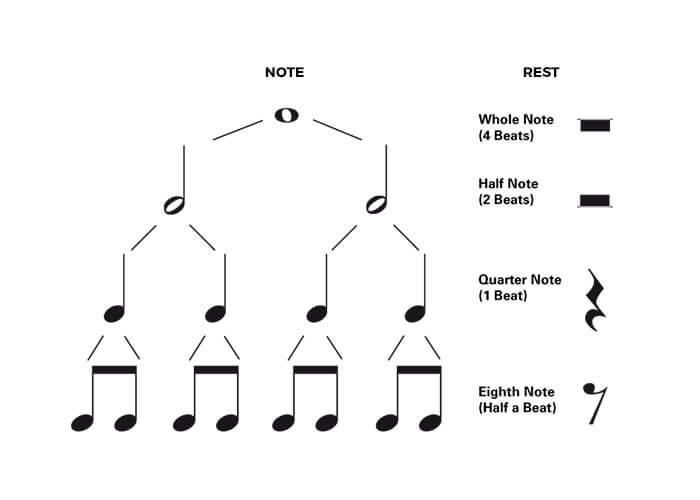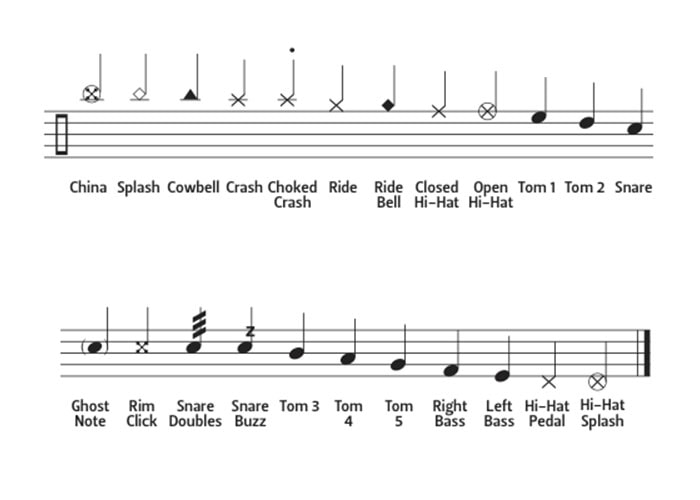© All rights reserved Copyright 2024
How To Read Drum Notation
Learning Essentials
INTROduction:
One of the most ignored drumming skills is the ability to read. Far too many drummers by-pass it early on and often regret it later in life – especially when they miss out on learning and playing opportunities because they can’t do it.
Reading drum rhythms and charts will:
1) Make your learning far easier, (because every drum book on the market has drum notation in it!)
2) Allow you to transcribe and memorize songs, and
3) Help to make you more employable.
Unless you are a top flight session guy you don’t have to read everything perfectly first time through so don’t panic. Just keep at it and you will become more fluid in time.

The first thing that you will notice when you look at a piece of drum music or any music for that matter is the staff – 5 horizontal lines that run across the page. This is where all the notes and directions are arranged.
The bar lines run vertically creating little slices of time in which the core rhythm of the music repeats. Usually, a piece consists of multiple bars of the same length and players can easily refer to bar numbers to remember/explain their part. For example, ‘There’s a fill at the end of the 16th bar.’
At the beginning of the piece (top left) you will find a time signature. This tells you how many beats are in each bar and which note value constitutes one beat. The most common time signature is 4/4 which means four quarter notes in a bar. There are other time signatures that you will come across – 3/4, 5/4, 6/8, 7/8, 12/8 – but not as often.
You will also find the drum clef which is used for pitchless instruments and a tempo marking that tells you the speed of the music in beats per minute.
In drum notation, the note’s position and symbol indicates a particular drum or cymbal. You’ll find there isn’t a great deal of consistency in drum transcriptions and many authors and composers use their own system. It can get confusing for new readers but fortunately most books have a drum key at the front to tell you what all the symbols mean. It will look something like this:

Once you are familiar with the drum key you need to learn note values. That is, how long a note lasts. Drums are different from other instruments in that you don’t sustain the sound, instead you hit the drum or cymbal then rest for the remainder of the notes duration.
Here is a table of the most common note values:

In addition to notes, music and drum notation also include rests. These are silent spaces that you do not play. Which explains the name, rest.
You can stop for a quick cup of tea and then start playing again!
Here are many more symbols and commands that you will come across in your studies so here are a few examples and what they are asking you to do:

Reading is a big area of study and gets difficult when you start working with more complex pieces of music. Now that you’ve got your head around the basics I would strongly recommend working with a proficient teacher for a while to advance your skills.
That’s how I got started with reading and it made an incredible difference to the way I study, play and teach. You will benefit more from the drum ninja site and from all the other learning resources that are out there.
Here are some study materials that will help you out:
Basics in Rhythm by Garwood Whaley
Syncopation by Ted Reed
Modern Reading Text in 4/4 by Louie Bellson
The New Breed by Gary Chester

